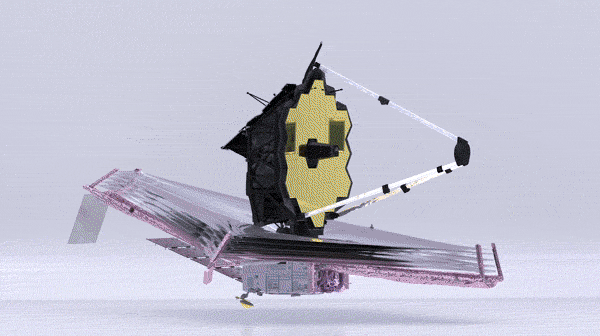The James Webb Space Telescope represents a monumental leap in our quest to understand the cosmos. As the most significant and advanced space telescope ever constructed, its mission encompasses peering back over 13 billion years to observe the universe's earliest moments, merely 200 million years post-Big Bang. This groundbreaking observatory is poised to unveil the mysteries of the formation of the first galaxies, delve into the intricacies of our solar system, and scrutinize the composition of exoplanet atmospheres potentially harboring the seeds of life. Here's an overview of its extraordinary capabilities and intriguing aspects.
Spanning the size of a tennis court and towering as high as a three-story building, the sheer scale of the James Webb Space Telescope is a marvel in itself. To accommodate its launch into space, the telescope's design incorporates an intricate folding mechanism reminiscent of origami, allowing it to snugly fit within its transport vessel. Once in orbit, it gracefully unfolds, beginning with its sunshield, to assume its full dimensions and commence its scientific endeavors.
One of the telescope's signature features is its ability to penetrate cosmic dust clouds using infrared light. This capability is crucial for observing the universe's earliest stages and the ongoing formation of stars and planets shrouded by dust. Unlike visible light, infrared light can traverse these clouds, offering a window into these enigmatic processes. This method of observation draws a parallel to how firefighters use infrared technology to see through smoke, showcasing its practical applications beyond astrophysics.
The James Webb Space Telescope's sunshield serves a critical protective function, akin to wearing a hat in sunny conditions. This tennis court-sized barrier ensures the delicate instruments and mirrors are shielded from the Sun's heat, maintaining the telescope's sensitivity to the faint whispers of distant celestial bodies. The temperature differential across the telescope can exceed 600 degrees Fahrenheit, highlighting the engineering prowess behind its design.
In the pursuit of clarity and detail in the cosmos, the telescope employs a set of 18 gold-plated mirrors, meticulously engineered to work in unison as a single, expansive mirror. The choice of gold plating enhances the mirrors' reflectivity in the infrared spectrum, optimizing the telescope's observational capabilities. This segmented approach sidesteps the challenge of launching a monolithic mirror into space, demonstrating an ingenious solution to a complex problem.
Beyond capturing the birth of galaxies and the dance of celestial bodies, the James Webb Space Telescope is on a quest to unearth potential signs of life on distant exoplanets. With thousands of exoplanets already identified in the galaxy, the telescope will scrutinize their atmospheres for the elemental signatures that could hint at biological activity. This endeavor not only broadens our understanding of the universe but also places our own existence in a cosmic context.
Since its historic launch on December 25, 2021, the James Webb Space Telescope has embarked on a mission that transcends mere observation—it seeks to answer fundamental questions about our place in the universe and the origins of everything we know. Through its lens, astronomers and scientists worldwide anticipate revelations that will redefine our understanding of space, time, and life itself. As this celestial sentinel begins its journey through the cosmos, the world watches with bated breath for its findings, poised to unlock the mysteries of the vast universe that lies beyond our earthly home.
Tags:
Space Technology

